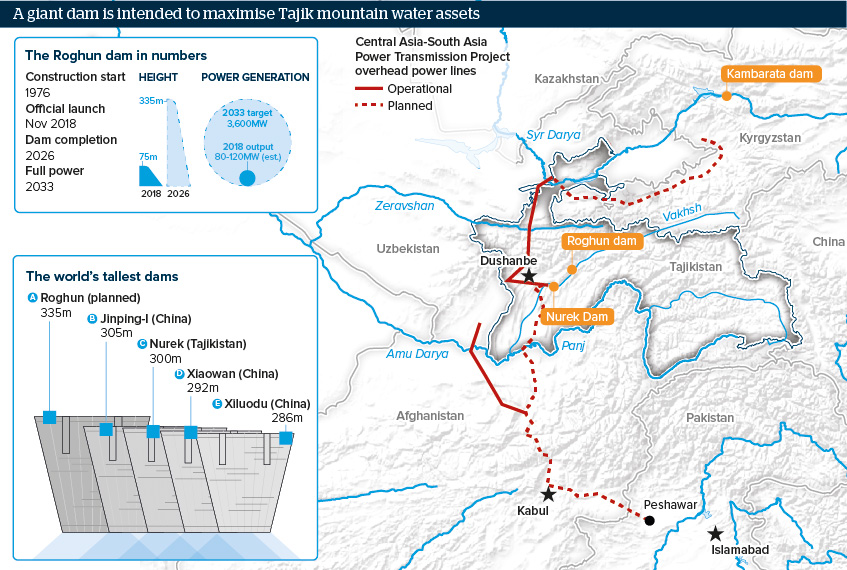Tajik dam may alter energy map -- but not yet
The Tajik authorities’ portrayal of the Roghun hydro-plant as a game-changer is partly true but they have to finish it
Source: Asia-Plus, Fergana.ru, Barq-i Tojik, Sputnik Tajikistan
Outlook
The November 16 launch of the Roghun hydroelectric scheme was presented as a momentous event, the culmination of a national project to solve all Tajikistan’s energy problems and move from frequent blackouts to plentiful electricity supplies and lucrative exports.
That is still in the future: only one of six turbines is installed and the dam has reached just one-quarter of its intended height.
One obstacle seems to have receded: for two decades Uzbekistan saw it the dam as an existential threat, blocking vital irrigation along the river Amu Darya. A new Uzbek leadership has decided to cooperate on the plant in the hope of managing water flows jointly.
Impacts
- An Asian Development Bank grant is intended to re-connect the shared Central Asian power grid.
- Future Tajik electricity exports require completion of power lines under the Central Asia-South Asia (CASA-1000) project.
- Uzbekistan has also switched from hostile opposition to cooperation on the Kambarata hydroelectric dam in Kyrgyzstan.
- Feasibility studies cited by Tajikistan suggest that seismic risks to the dam and downstream water fluctuations are manageable.
See also
- Tajik election may be president's last before handover - Sep 4, 2020
- Joint energy plants to cement better Uzbek-Tajik ties - Jan 29, 2020
- Prospects for Central Asia in 2020 - Nov 27, 2019
- Central Asian states face high climate change risks - Oct 4, 2019
- Tajikistan to chase funds for giant dam despite delays - Apr 8, 2019
- Prospects for Central Asia in 2019 - Nov 27, 2018
- More graphic analysis
